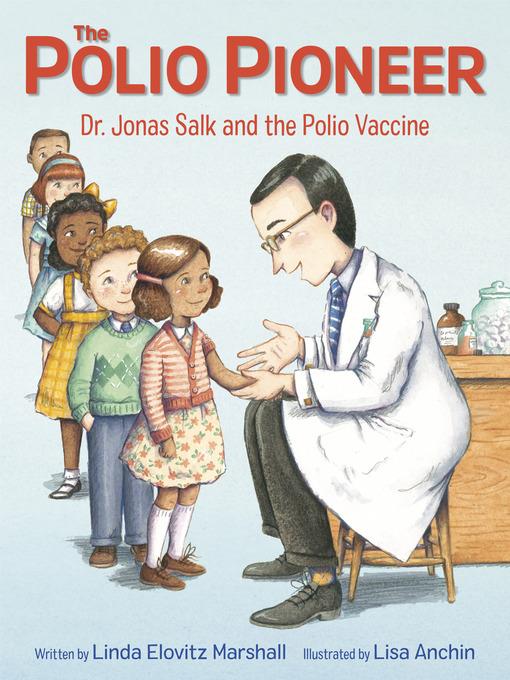
The Polio Pioneer
فرمت کتاب
ebook
تاریخ انتشار
2020
Lexile Score
820
Reading Level
3-4
نویسنده
Lisa Anchinشابک
9780525646532
کتاب های مرتبط
- اطلاعات
- نقد و بررسی
- دیدگاه کاربران
نقد و بررسی

May 15, 2020
Portrait of a hero, scientist, and dreamer. As a child, Jonas Salk saw things from a unique perspective. While his friends played games, he preferred to read but was called to act as a referee because of his awareness and evenhandedness. While others rejoiced at the end of World War I, he saw the soldiers who had sustained injuries. Growing up as an observant Jew whose family had fled Russian persecution, "Jonas prayed that he might, someday, help make the world a better place." Appealing illustrations and accessible text show how Salk, as an adult, pursued the same ideals through his work as a doctor and researcher, eventually working as a young researcher to help create the first flu vaccine and later, famously, the polio vaccine. This timely, quickly paced selection is straightforward, showing the value of research, experimentation, hard work, and testing while presenting Salk's dedication and accomplishments within the context of the epidemics he sought to control. Though the text skimps a bit on the role of trial and error in experimentation, this tale of a quiet hero is engaging and enlightening as it celebrates Salk's accomplishments while showcasing the attributes and attitudes that led to his success. An exciting, informative introduction to medical research, the work of Jonas Salk, and the man himself. (author's note) (Picture book/biography. 6-10)
COPYRIGHT(2020) Kirkus Reviews, ALL RIGHTS RESERVED.

June 1, 2020
Preschool-G The son of Jewish immigrants who valued education and good works, Jonas Salk grew up to become a doctor and a researcher. He helped develop a vaccine that offered protection against flu viruses, which had reached pandemic levels when Salk was a child. Later, he led his own lab in creating a safe vaccine preventing polio, another viral disease that was infecting an increasing number of people, particularly children. After his effective vaccine became widely available, it eliminated polio in almost every country. And Dr. Salk returned to his lab to work on other diseases. Marshall introduces Salk as a kindly person who worked hard, using his wits and education to help others. The acrylic, gouache, and pencil illustrations recreate period settings and clothing well while reinforcing the factual content and amiable tone of the text. There's no denying the timeliness of this picture book biography, and its recognition of the benefits of vaccination is equally important. A reassuring biography of a dedicated scientist who worked diligently, developed a successful polio vaccine, and gave it to the world.(Reprinted with permission of Booklist, copyright 2020, American Library Association.)

August 28, 2020
Gr 1-5-This timely picture book biography describes the life and scientific contributions of Dr. Jonas Salk (1914-1995). A sensitive, studious child, Salk was born in New York City to poor Eastern European Jewish refugee parents. He attended the City College of New York and later studied medicine at the New York University School of Medicine, where he met his mentor and friend, Dr. Thomas Francis. Together, they collaborated on the first flu vaccine in response to the 1918 pandemic. Their hard work paid off; their vaccine was a success. Years later, Salk created a vaccine for polio, a disease that "paralyzed or killed thousands of people every year, including many babies and small children." For several years, communities closed swimming pools, beaches, and movie theaters to manage the spread...sound familiar? Almost two million youngsters, dubbed "Polio Pioneers," voluntarily took the new vaccine before it was deemed safe and effective. On April 12, 1955, Salk announced the vaccine's success to the world. Anchin's colorful illustrations are rendered in acrylic gouache and pencil. Children and scientists of diverse skin colors, religions (both a yarmulke and hijab are shown), and genders are depicted. One page features children in their homes looking out the windows at empty streets. Marshall's author's note offers a personal reflection on the polio years. VERDICT A recommended purchase for most libraries. This title explains how vaccines work, provides historical context, and inspires the hope of a victory over the current pandemic.-Barbara Auerbach, Cairo P.L., NY
Copyright 2020 School Library Journal, LLC Used with permission.

























دیدگاه کاربران